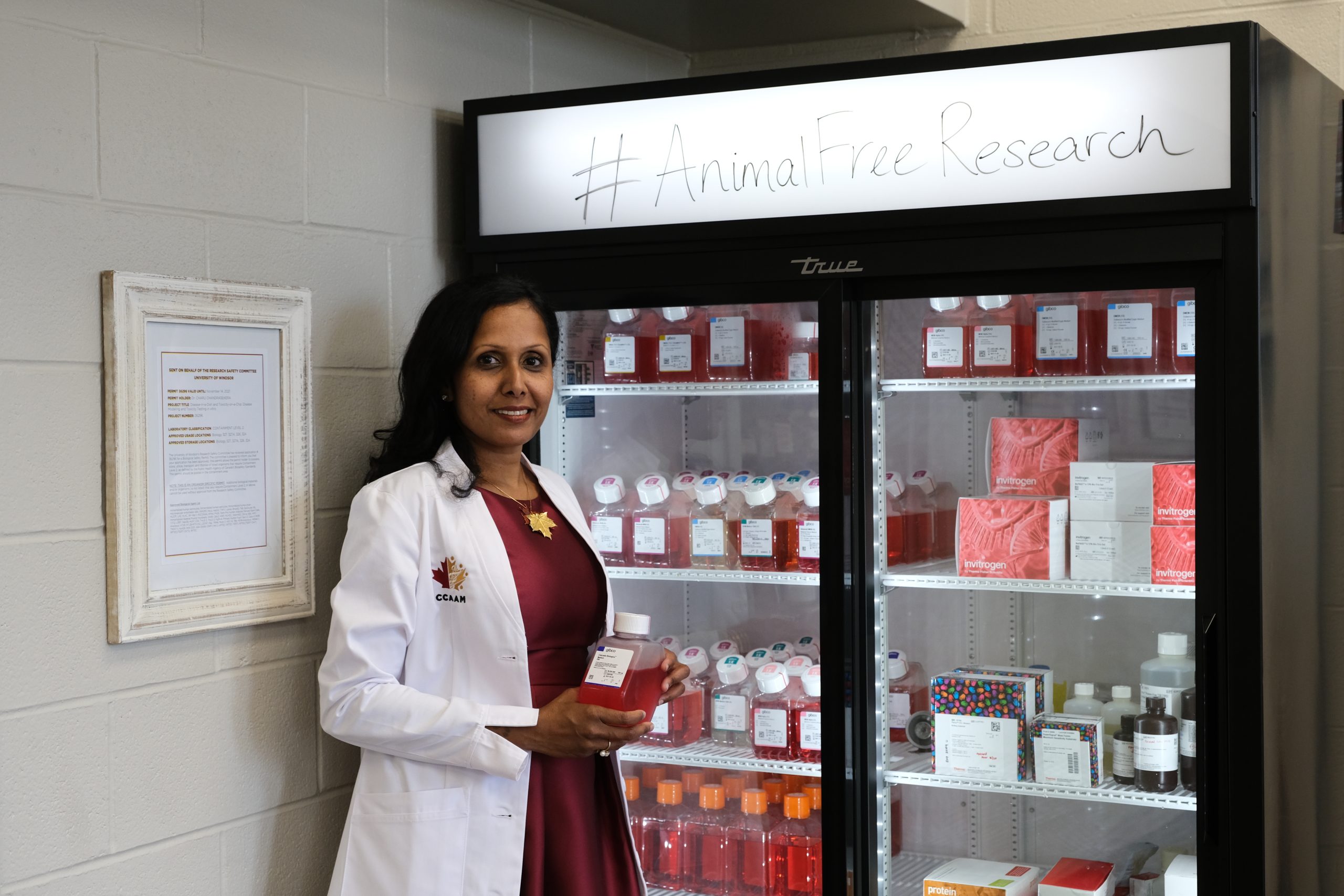In 2023, Canada’s Liberal government passed landmark legislation to phase out chemical toxicity experiments on animals. Bill S5, as it was called, seemed like a big step in the right direction for scientific progress and animal welfare. However, according to some political leaders, scientists and animal advocates, one crucial step has been missed: funding the research centre capable of putting those laws into action.
The Canadian Centre for Alternatives to Animal Methods (CCAAM) in Windsor quietly closed its doors in May and officially shuttered operations in October. Now Canada risks falling short on its ambitious goals.
More than 3.5 million animals were reportedly used in research, teaching and testing in Canada in 2022. And that number represents only federally funded facilities, since private laboratories are not required to report.
By passing Bill S5, the Strengthening Environmental Protection for a Healthier Canada Act, albeit eight years after the United States passed similar legislation, Canada appeared to be working toward what are known as the three Rs: to reduce, refine and replace the use of animals in toxicity testing.
In addition to phasing out chemical toxicity testing of substances such as, say, new flame retardants or pesticides, on animals, Canada would become the 44th country to pass laws to end cosmetic animal testing and sales of cosmetics tested on animals, joining several U.S. states and the entire European Union. And according to the federal budget released in April, the government was poised to allocate tens of millions in funding to “protect Canadians from being exposed to some 30,000 chemicals, including by advancing scientific research to phase out animal toxicity testing.”
In addition to providing humane alternatives for animal toxicity testing, CCAAM’s work also has great potential to benefit the millions of other animals undergoing other types of agonizing experiments every year in Canadian labs.
– Camille Labchuk, executive director of Animal Justice
For Dr. Charu Chandrasekera, founder and executive director of CCAAM, this was the hope she needed to keep CCAAM’s underfunded work alive. Until she realized her centre was not included in the plan.
CCAAM opened in 2019, at the University of Windsor. Chandrasekera, a former animal researcher, worked for years in biomedical research with mouse models of heart disease and diabetes. “It became very obvious that the work I was doing was not translatable [to humans],” she told Maclean’s magazine at the time. “Nothing was really reproducible; there were so many discrepancies and contradictions, even among the top-notch researchers.”
The use of animal models has long been considered necessary in biomedical research and toxicity testing. Yet more than 90% of drugs deemed safe and effective in animal models go on to fail in human clinical trials. Similarly, relying on animal models in toxicity testing – to assess the potential risks of substances such as pesticides, cleaning agents, drugs, et cetera – has also proven to be problematic in terms of assessing real-world effects. These stark statistics highlight a fundamental flaw in traditional testing methods, where results in animals often do not translate to human outcomes.

With this knowledge, Chandrasekera and her team went to work on developing and promoting cutting-edge, human-based methods that not only reduce animal suffering but promise precise, cost-effective and faster results.
“At CCAAM, we led pioneering interdisciplinary programs to transform the Canadian animal-testing landscape,” Chandrasekera tells Corporate Knights. “Through collaborations with academia, industry, government and NGOs, we advanced various technologies to emulate human biology in a petri dish, such as 3D-bioprinted human tissues.”
Innovative alternative methods are being developed at centres around the world – in the United States, the United Kingdom, the European Union, Japan, Brazil and South Korea – to mimic human biology (rather than mouse biology), allowing researchers to replicate complex biological processes in a petri dish or virtual environment, without the need for animal testing. The only difference is that those centres receive millions in federal funds. CCAAM subsisted on private gifts and modest grants. Until it didn’t.
Animal welfare advocates cry foul over lack of funding
Today, Chandrasekera’s equipment sits boxed up in a storage facility in Ottawa, the doors to her University of Windsor laboratory closed.
And with the comment period on the draft strategy to replace, reduce or refine vertebrate animal testing under the Canadian Environmental Protection Act closing today, November 13, animal advocates are hoping the public and other stakeholders will speak up in defence of Chandrasekera’s work.
Corporate Knights contacted Health Canada to find out why the government isn’t funding CCAAM. Although the department didn’t provide a direct answer, spokesperson Marie-Pier Burelle stated that it and Environment and Climate Change Canada “are leading and collaborating on a range of scientific and research activities related to animal testing alternatives.” This includes “various scientific and research activities led by Health Canada scientists to support key focus areas for ongoing and future research, as well as contributions to initiatives with intergovernmental and multistakeholder organizations.”
Health Canada adds that efforts to reduce reliance on vertebrate animal testing extend beyond any single organization. Though it would appear it doesn’t include CCAAM at all. Burelle says that, despite the centre’s closure, the department’s “aim to reduce reliance on animal testing remains unchanged.” She also points to “several funding sources to support academic research,” including grants.
Liberal Member of Parliament Nathaniel Erskine-Smith says that while the government has committed legislatively to phasing out toxicity testing on animals, “it’s completely failed to take commensurate action to fund these efforts, and it’s inexplicably stood on the sidelines while CCAAM closed its doors.” He says that a number of caucus members “have spent years trying to secure a funding commitment to match the government’s stated promises, and it’s frankly embarrassing that the government has been unable to deliver nominal funding to support.”
Related
Of mice and men: Could COVID spell the end of animal testing?
Empty animal welfare promises a bad look for the food industry
Is your pension invested in animal cruelty?
He’s not the only one calling foul. Lawyer Camille Labchuk, executive director of Animal Justice, says in a statement that the indefinite closure of CCAAM “would represent a major setback not only for animals but for Canadian science.” She says that “in addition to providing humane alternatives for animal toxicity testing, CCAAM’s work also has great potential to benefit the millions of other animals undergoing other types of agonizing experiments every year in Canadian labs.” Federal support is needed, she says, “to ensure Canada can stay on track with its goal to end animal toxicity testing and become a leader in cruelty-free research.”
Health Canada says revisions to the government’s draft strategy will be made “based on input received from the public and stakeholders, with a final strategy expected to be published by June 2025.” That input can be relayed via the Government of Canada website through November 13.
Correction: An earlier version of this article misstated that university labs in Canada are not required to report their use of animals in research. They are accredited by the Canadian Council on Animal Care (CCAC) and their data is included in the report linked above.
Jessica Scott-Reid is a freelance writer covering animal rights and welfare and plant-based food topics. She is also a co-host of the Canadian animal law podcast Paw & Order.







